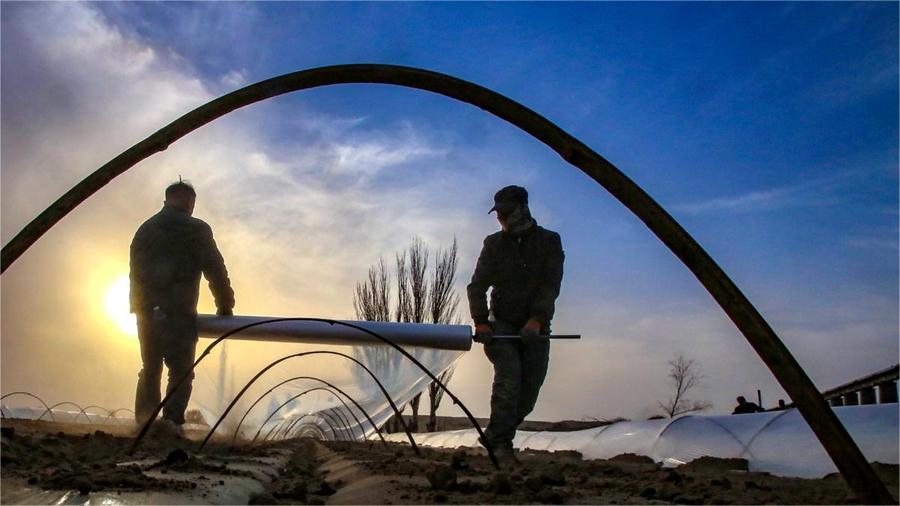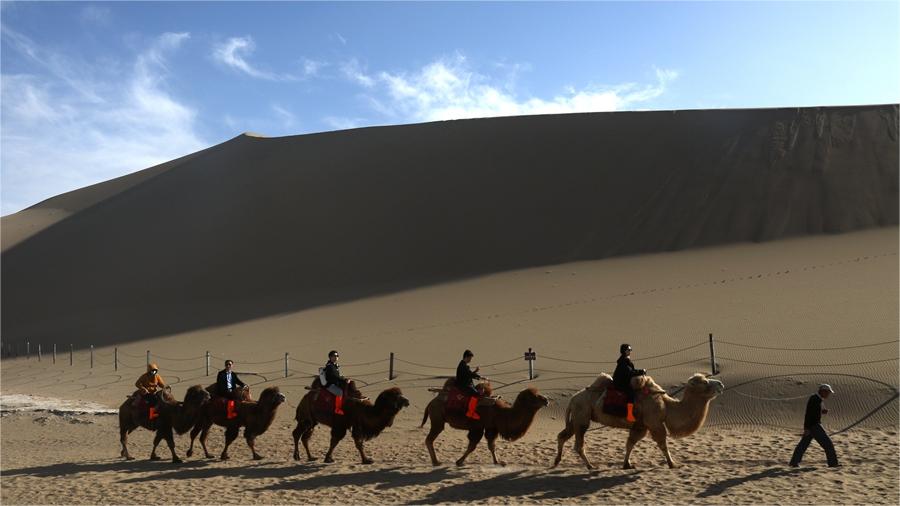New-age farmers fuel modern farming development in northeast China
CHANGCHUN, March 29 (Xinhua) -- Around spring equinox, a peak season for farmers in northeast China to procure agricultural goods and sell grain, Chen Zhanchao successfully sold over 6,000 tonnes of last year's harvested corn.
The 39-year-old is the Party secretary of Sijianfang Village in Changling County, Jilin Province. In 2021, Chen led the establishment of a farmers' cooperative, encouraging villagers to join the initiative by contributing their land as shares.
Integrating over 400 hectares of land to cultivate corn, the cooperative saw a substantial increase in corn output last year, with the yield per hectare reaching nearly 15,000 kg.
As shareholders, the villagers are expected to receive a total dividend of some 8.4 million yuan (about 1.18 million U.S. dollars), an increase of more than two million yuan compared with the past, according to Chen.
The abundant harvest achieved by the villagers was a direct result of Chen's efforts to promote and apply modern farming techniques during land cultivation.
Located on the Songnen Plain which is covered with fertile black soil, Changling County is dubbed one of the major grain-producing counties in China. However, decentralized land management in the past hindered the large-scale application of advanced agricultural technology, thus limiting the grain output.
After setting up the cooperative and integrating land, Chen has been to Beijing, Xinjiang Uygur Autonomous Region and Inner Mongolia Autonomous Region, among other places, to consult agricultural experts and learn new farming techniques.
"We used to apply fertilizer at one stroke, but now we have learned to fertilize in stages," said Chen, adding that with the implementation of advanced technologies including fertigation and dense planting, they grew more than 80,000 corn per hectare last year, an increase of 20,000 plants per hectare compared to earlier, with the corn yield increased by over 3,500 kg per hectare.
At present, more than 100 local households are part of the cooperative, and many large-scale grain growers from neighboring villages have also come to consult Chen to learn advanced farming techniques. It is estimated that new fertigation technology will be applied in more than 6,666 hectares of land in Liushui Township, which administers Sijianfang Village, this year.
In recent years, authorities in the northeast China, the country's top grain-producing region, have accelerated efforts to promote advanced agricultural technology, protect black soil and expand the grain industry chain to enhance grain output and maximize planting benefits.
More and more new-age farmers like Chen, who are willing to embrace advanced technology and new ideas, are springing up to fuel modern farming development.
Han Fengxiang, 42, returned to her hometown in Jilin's Lishu County to run a cooperative with her relatives after her graduation. The cooperative currently boasts over 150 local households as members and manages 1,000 hectares of land.
Instead of relying on traditional farming methods, Han adopted modern practices such as conservation tillage technology for black soil conservation, which involved returning straw and livestock manure to the field after fermentation. She also carried out mechanized farming leveraging large-scale agricultural machinery to enhance the grain output.
The implementation of protective and mechanized measures has led to a rise in dividends for the members of the cooperative, increasing from less than 10,000 yuan per hectare in the past to 16,000 yuan per hectare presently. Under Han's leadership, conservation tillage technology has been applied to 80 percent of the cultivated land in Lishu County.
This year, Han plans to set up a grain processing plant, introducing new equipment like oil presses and packaging machines. The whole agricultural industry chain will help cut production costs and boost planting benefits, she said.
Jilin Province is ramping up support for the development of new agricultural businesses such as those led by Chen and Han, aiming to increase the managed land area to cover 70 percent of grain acreage over the next three years through financial and policy assistance.
Photos
Related Stories
- Innovation propels high-quality spring farming in C China's Henan
- Technology facilitates efficient spring farming in C China's Henan
- Modern agricultural technologies applied at vegetable base in Aksu, Xinjiang
- Spring sowing of cotton kicks off in China's major hub of cotton production
- Thriving agriculture injects vitality into county in Guangxi
- In pics: Spring farming underway in Binyang, S China's Guangxi
Copyright © 2024 People's Daily Online. All Rights Reserved.









